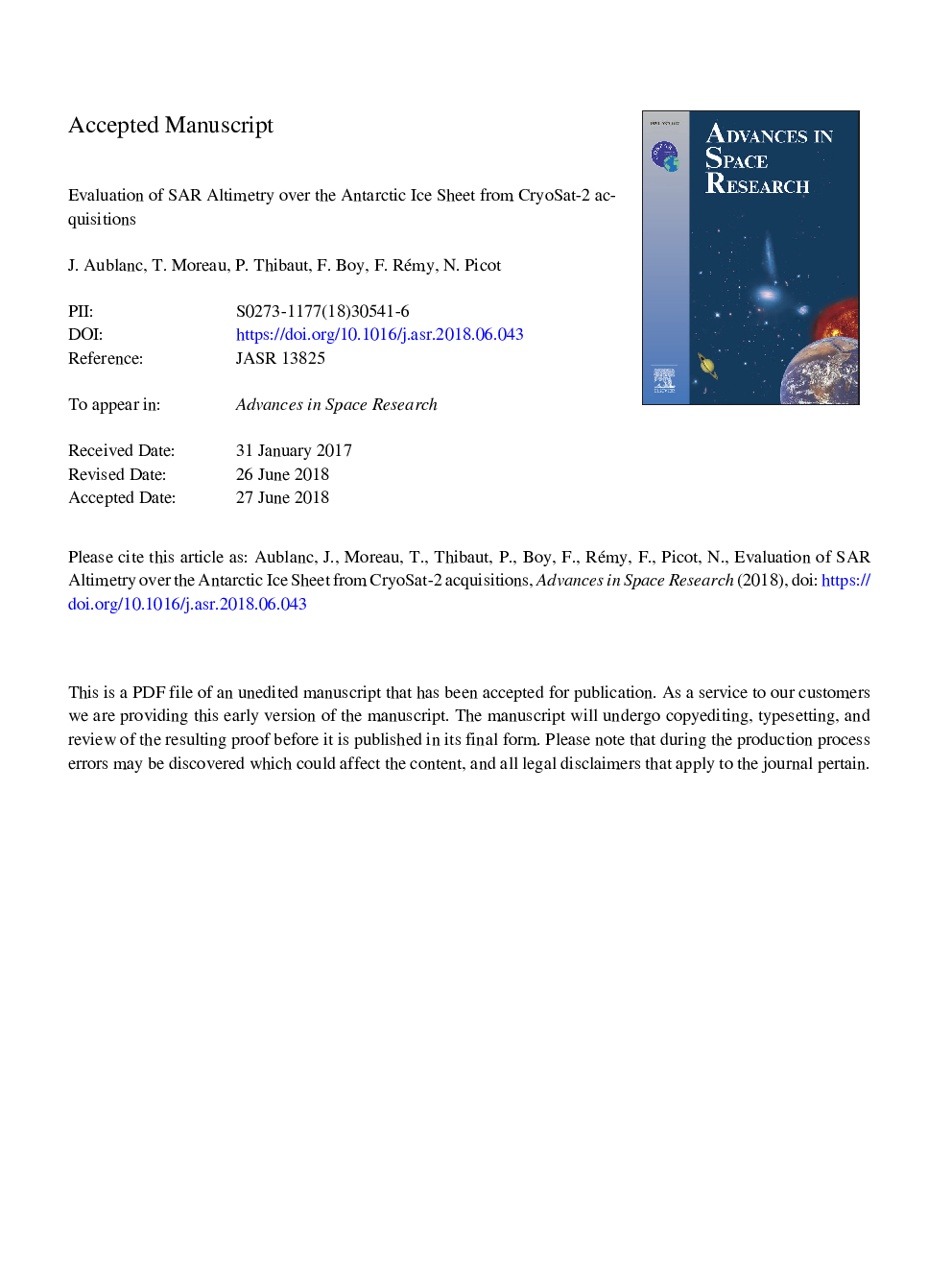| Article ID | Journal | Published Year | Pages | File Type |
|---|---|---|---|---|
| 8131593 | Advances in Space Research | 2018 | 26 Pages |
Abstract
Since the 1990s and the launch of ERS-1, Earth's polar regions have been near continuously monitored by satellite altimetry, improving substantially our knowledge of the ice sheet topography and its evolution. CryoSat-2 is the first satellite carrying on-board a new generation of radar altimeter able to operate in a Synthetic Aperture Radar (SAR) mode. In comparison with the Low Resolution Mode (LRM) used in conventional radar altimetry, SAR mode allows to reduce the along-track footprint from several kilometers to 300â¯m. In this paper we assess the SAR mode performance over the Antarctic ice sheet using sporadic CryoSat-2 acquisitions carried out in winter 2014 on dedicated zones (Lake Vostok and Adelie land). Level-1 data from two different algorithms are exploited: the CNES Cryosat-2 Processing Prototype (CPP) and the ESA Instrument Processing Facility (IPF). Firstly, results show that the estimated surface elevation from the SAR mode acquisitions over the flat surface of Lake Vostok is within the same order of magnitude as available DEMs. Mean bias is in the order of several centimeters, without any corrections accounting for the snowpack volume scattering. Secondly, the undertaken analyzes evidence that SAR altimetry has either no, or only small, sensitivity to the along-track slope-induced effect, while the across-track slope-induced effect is similar as LRM. Thirdly, SAR altimetry mode appears to be more performant than Pseudo-LRM over the steep slopes of the Antarctica margins. The precision of the estimated surface elevation is improved by 30%, and the processed waveforms are less noisy. Overall, this work demonstrates the improved measuring capability offered by SAR mode altimetry over the ice sheet surface compared to conventional altimetry.
Related Topics
Physical Sciences and Engineering
Earth and Planetary Sciences
Space and Planetary Science
Authors
J. Aublanc, T. Moreau, P. Thibaut, F. Boy, F. Rémy, N. Picot,
